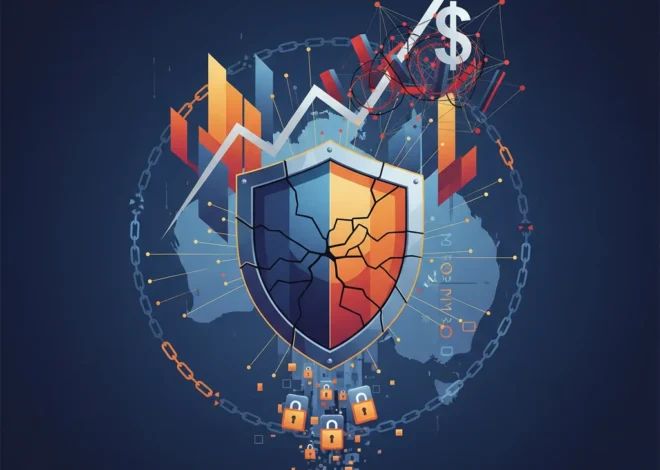
Beyond the Banks: Hezbollah’s Pivot to Fintech and What It Means for Global Finance
The relentless march of financial technology has redrawn the map of global commerce. With a simple tap, we can move money across continents, invest in emerging markets, and participate in an increasingly borderless economy. This revolution in finance has democratized access to capital and created unprecedented efficiencies. But within the gleaming architecture of this new digital world, shadows are forming. The very tools designed for convenience and growth are being co-opted for more sinister purposes, creating a new and complex frontier in the fight against global terrorism.
A recent investigation has cast a stark light on this emerging threat, revealing how charities and associations linked to Hezbollah, the Iran-backed militant and political movement, are increasingly turning to digital payment platforms and cryptocurrencies for fundraising. This strategic pivot represents a significant challenge to international efforts aimed at combating money laundering and the financing of terrorism (AML/CFT), exploiting perceived weaknesses in a system struggling to keep pace with technological change. For investors, banking professionals, and business leaders, this development is more than a distant headline; it’s a critical signal of the evolving risk landscape in the digital economy.
The Great Migration: From Cash Couriers to Crypto Wallets
For decades, sanctioned groups like Hezbollah relied on a clandestine network of traditional financial tools to move money. This often involved physical cash couriers, complex webs of front companies, and informal value transfer systems like hawala. While effective, these methods were cumbersome and increasingly vulnerable to detection by a global financial system fortified with stringent regulations after 9/11.
The digital revolution has offered these groups a compelling alternative. Platforms like PayPal, and more pointedly, cryptocurrencies like the stablecoin Tether (USDT), provide a trifecta of benefits: speed, perceived anonymity, and direct access to a global donor base. According to a report by the Financial Times, researchers have identified multiple Lebanon-based charities, designated by the US as being linked to Hezbollah, that have openly solicited donations through these modern channels. This isn’t a tentative experiment; it’s a calculated exploitation of the global financial technology infrastructure.
The appeal is clear. A donor in Europe or South America can transfer funds to an organization in Lebanon in minutes, bypassing the traditional banking system and its rigorous checkpoints. Cryptocurrencies, particularly those on public blockchain ledgers like Tron, add another layer of complexity for investigators, making it harder to connect a digital wallet to a real-world identity without sophisticated analytical tools.
Anatomy of a Digital Fundraising Campaign
The methods employed are both simple and sophisticated. The investigation highlighted several entities, including the Al-Qard Al-Hasan association—which functions as Hezbollah’s de facto financial institution—and other charitable organizations. These groups have been found to list PayPal accounts, cryptocurrency wallet addresses, and other digital payment options directly on their websites and social media channels.
To better understand the mechanisms at play, let’s compare the key platforms being exploited:
| Platform/Technology | Mechanism of Use | Key Vulnerability | Implication for AML/CFT |
|---|---|---|---|
| PayPal | Direct donation links on websites and social media for fiat currency transfers. | Relies on robust Know Your Customer (KYC) processes, which can be circumvented with false information or by using accounts in less stringent jurisdictions. | Requires constant monitoring and rapid account suspension once a link to a sanctioned entity is identified. |
| Tether (USDT) on Tron Blockchain | Publicly shared wallet addresses for receiving cryptocurrency donations. | Transactions are pseudonymous. While the ledger is public, linking a wallet address to a real-world identity is a significant investigative hurdle. | Demands specialized blockchain analytics tools to trace the flow of funds and identify links to sanctioned entities or high-risk exchanges. |
| Centralized Exchanges | Used to convert (“cash out”) cryptocurrency donations back into traditional currency like the US dollar. | The effectiveness of their compliance controls varies dramatically by jurisdiction. Illicit actors seek out exchanges with weak AML/CFT policies. | Highlights the need for global, standardized crypto regulations to prevent “jurisdictional arbitrage” by sanctioned groups. |
This multi-pronged approach allows these organizations to hedge their bets. If one platform shuts them down, as PayPal states it does “swiftly” upon detection (source), they can simply pivot to another or generate a new crypto wallet address. The persistence of these fundraising channels suggests that the response from the fintech industry, while often swift, remains reactive rather than proactive.
Rollin' on the River of ROI: What "Proud Mary" Teaches Us About Asset Transformation
The Ripple Effect: Why This Matters for Investors and Financial Markets
The exploitation of digital finance by sanctioned groups is not a niche compliance problem; it has far-reaching implications for the entire financial ecosystem, from individual investors to the stability of the global economy.
1. Reputational and Regulatory Risk for Fintech Companies
For any company in the payments or crypto space, being associated with terror financing—even inadvertently—is a catastrophic risk. This can lead to crippling regulatory fines, loss of banking partners, and a collapse in consumer trust. For publicly traded fintech firms, such a revelation could have a devastating impact on their stock market valuation. Investors are increasingly scrutinizing the robustness of a company’s compliance framework as a core component of their due diligence. A failure in this area is not just an operational lapse; it’s a fundamental business threat.
2. Increased Compliance Burden on the Entire Financial Sector
As regulators play catch-up, the compliance burden on all financial institutions will inevitably increase. This means higher operational costs for banking institutions, payment processors, and crypto exchanges, which must invest in more sophisticated transaction monitoring systems, blockchain analytics, and teams of compliance professionals. These costs can stifle innovation, particularly for smaller startups that lack the resources of established players. The challenge lies in creating regulations that are effective against illicit actors but not so onerous that they suffocate the growth of legitimate financial technology.
The AI Forgery Factory: How Generative AI Is Fueling a New Era of Corporate Fraud
3. Undermining the Integrity of Global Sanctions
Economic sanctions are a primary tool of modern foreign policy, used to pressure states and non-state actors without resorting to military conflict. When groups like Hezbollah can effectively bypass the traditional financial system, they undermine the efficacy of these sanctions. This has broad implications for geopolitics and international security. The ability to fundraise globally with digital currencies weakens the international community’s leverage and can prolong conflicts and regional instability, impacting global economics and market stability.
Fortifying the Digital Gates: A Call for Collective Action
Combating this evolving threat requires a multi-faceted approach that goes beyond simply shutting down individual accounts. The solution must be as dynamic and networked as the problem itself.
First, public-private partnerships are essential. Government intelligence agencies and financial regulators must work more closely with fintech companies and blockchain analytics firms. Sharing intelligence on illicit typologies and wallet addresses in near-real-time can help platforms proactively identify and block threats. The scale of the problem is too vast for any single entity to tackle alone.
Second, investment in next-generation compliance technology is non-negotiable. This includes AI-powered transaction monitoring that can detect subtle patterns of illicit activity and advanced blockchain forensics to de-anonymize illicit networks. As one analyst noted, the volume of transactions is so immense that “manual review is no longer a viable strategy” (source). The future of compliance is algorithmic.
Third, there is a pressing need for harmonized global regulation, particularly for crypto assets. The current patchwork of national rules creates loopholes that illicit actors exploit. A coordinated global framework, such as the one proposed by the Financial Action Task Force (FATF), would create a more level playing field and make it harder for sanctioned entities to find safe havens for their digital assets.
The ROI of Rest: Why Strategic Downtime is the Best Investment You'll Make This Autumn
The rise of digital finance has created immense value, but its tools are agnostic. The same technologies that power peer-to-peer lending and global e-commerce can also be used to fund conflict and terrorism. The challenge for the next decade of investing and innovation in financial technology will be to preserve the open, accessible nature of these platforms while building in the resilience and security necessary to protect the integrity of the global financial system. The fight has moved beyond the bank teller’s window and onto the blockchain, and our response must evolve with it.


